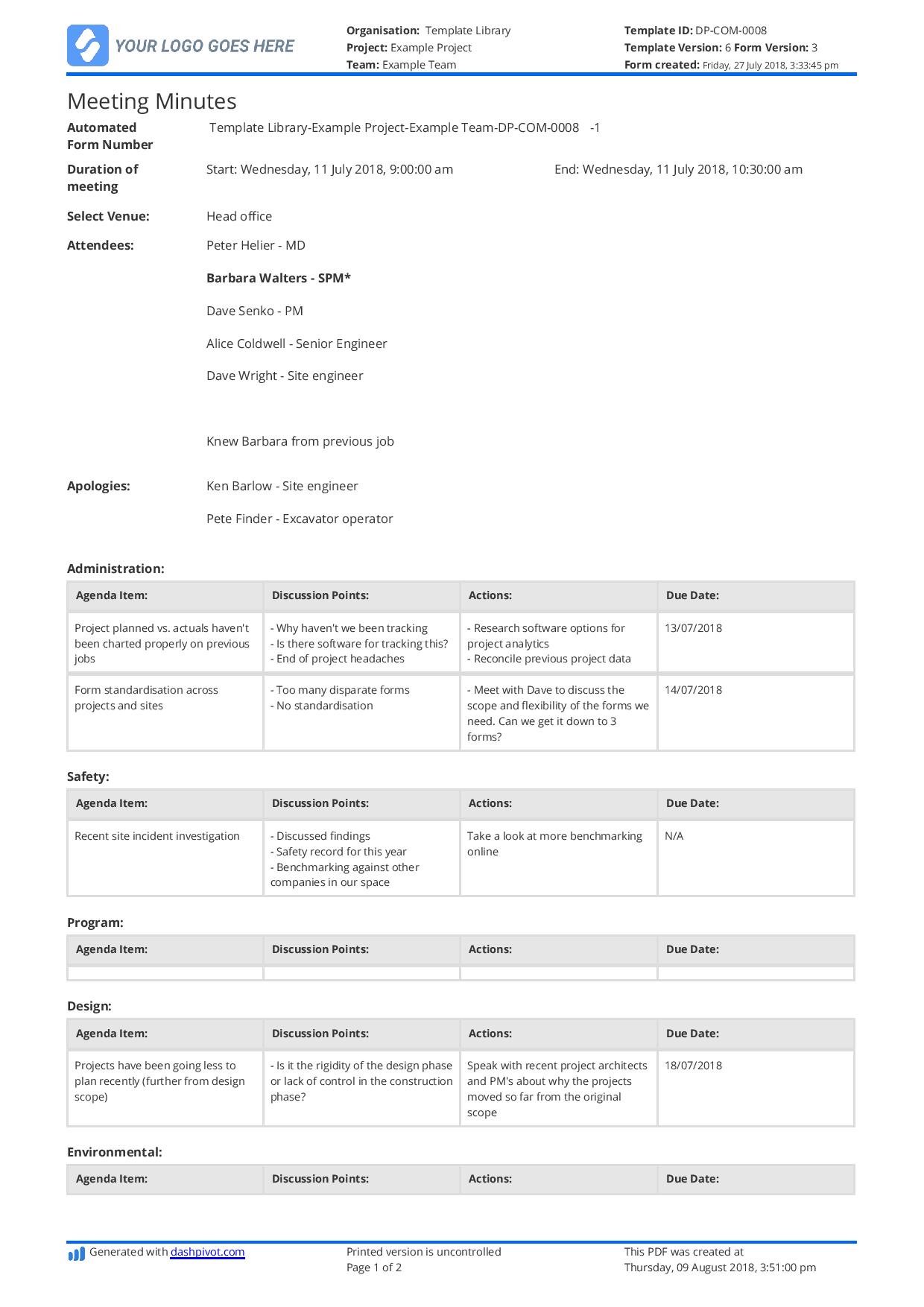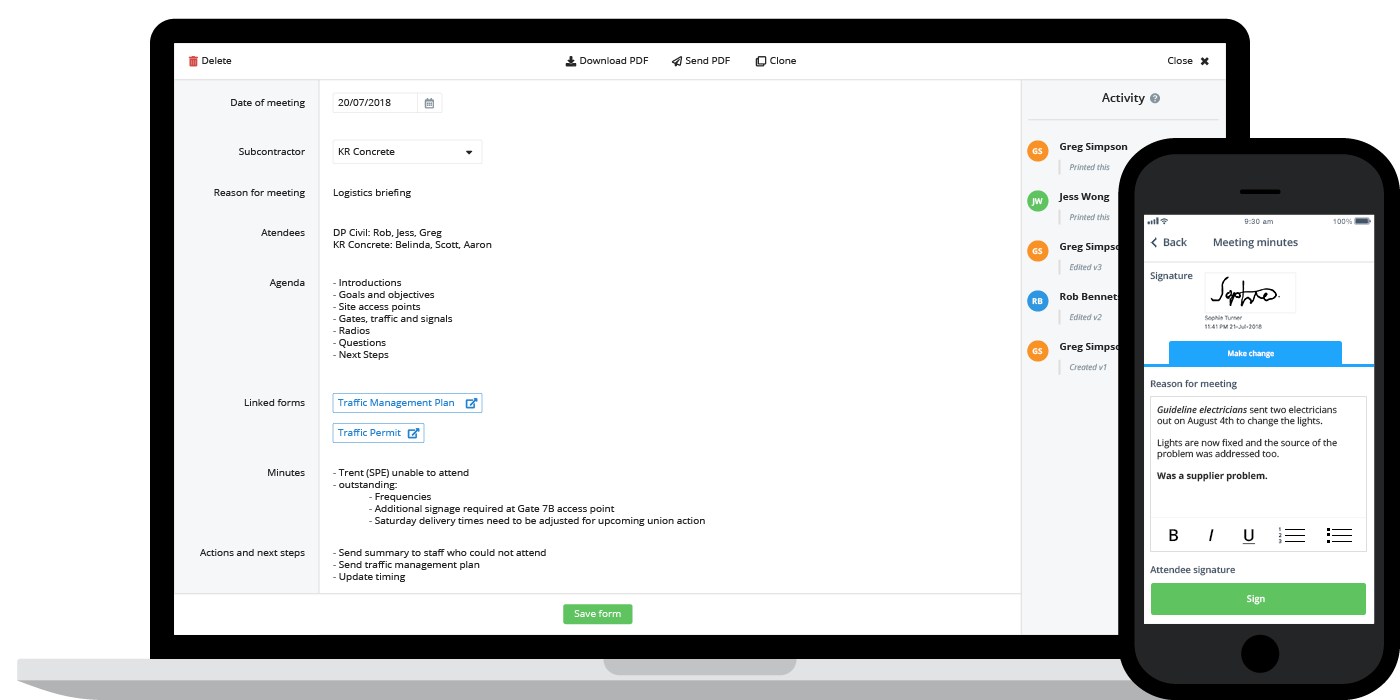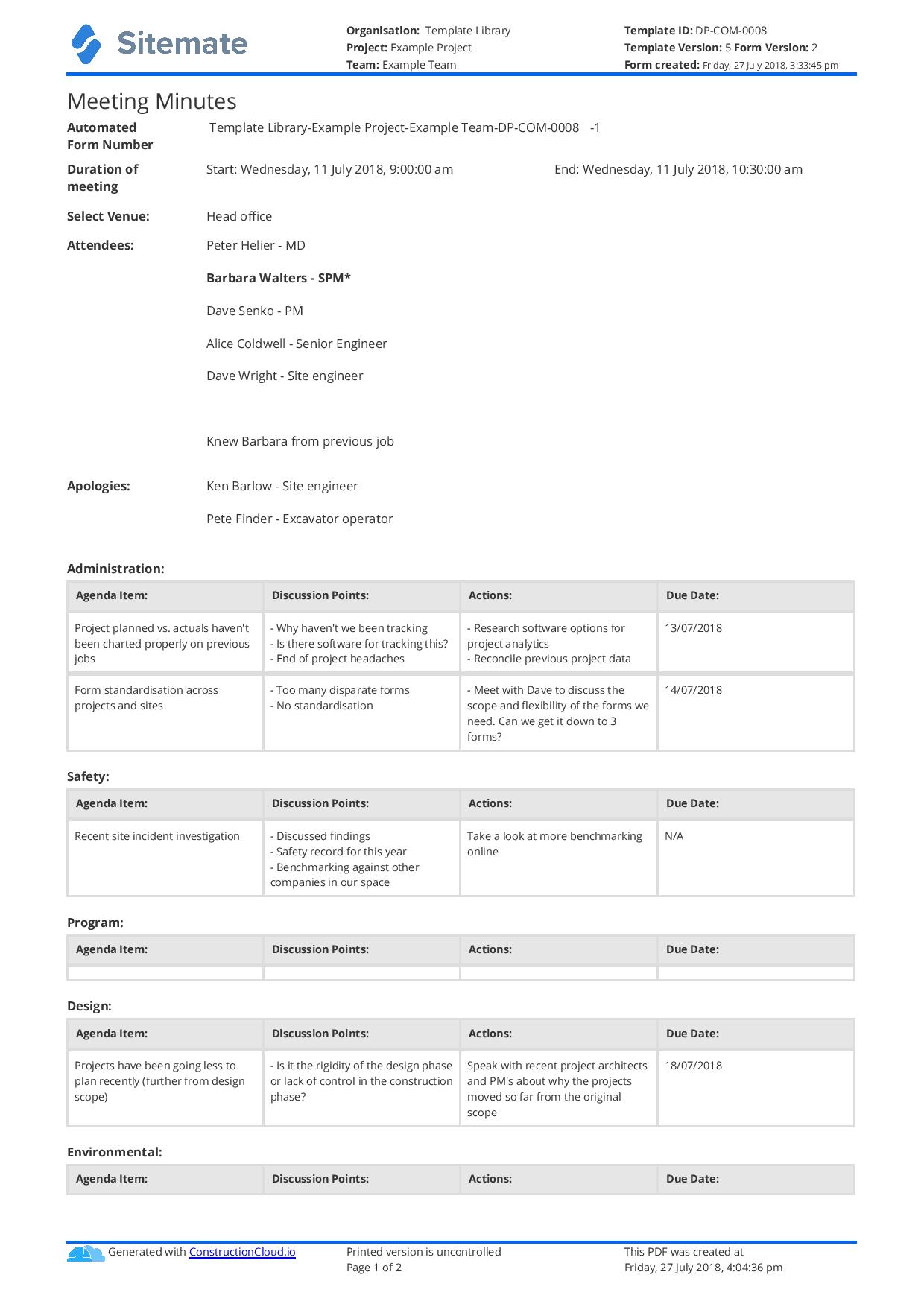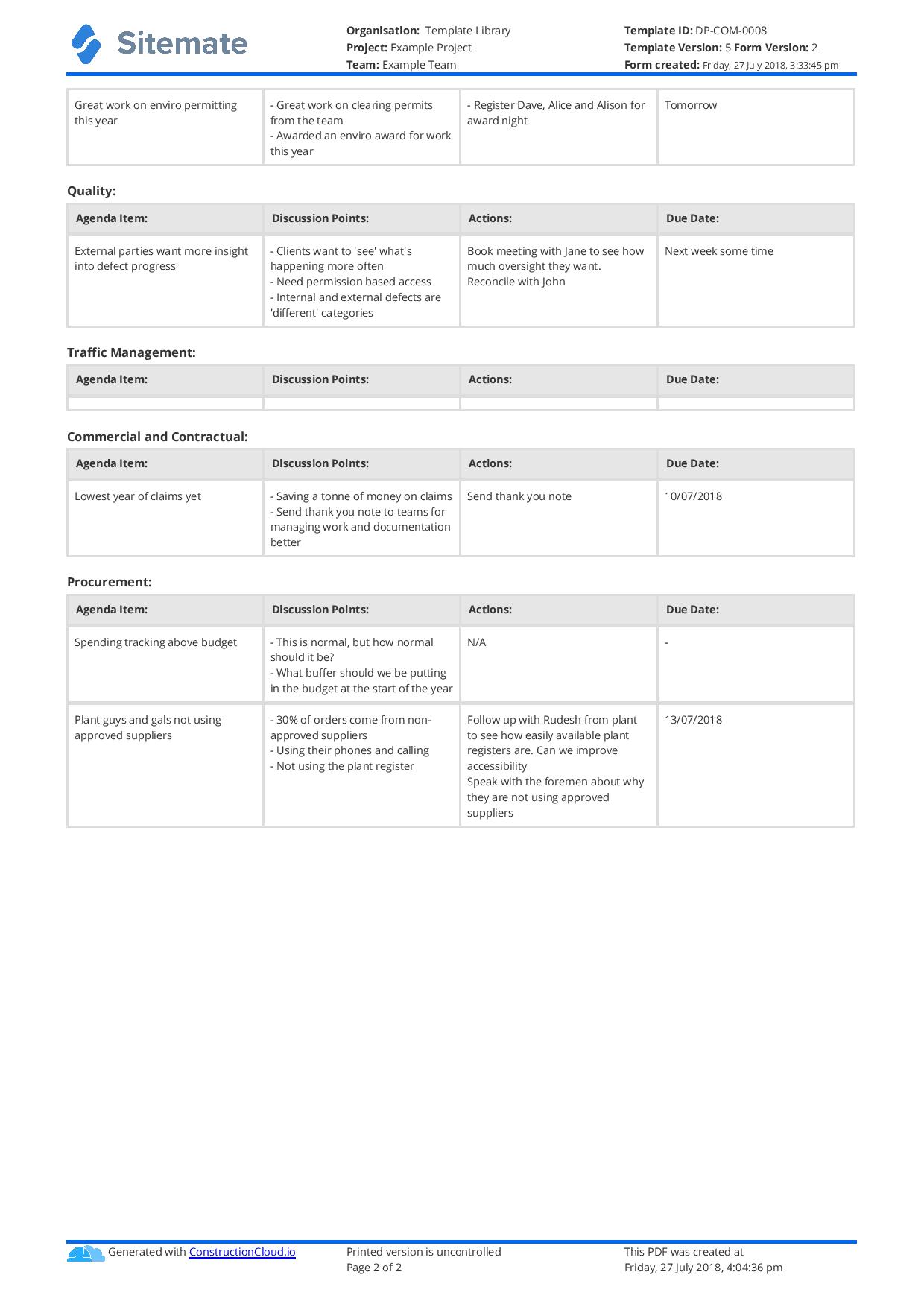Commercial – Construction meeting minutes
Construction meeting minutes: What you need to be recording
In this article, we'll cover the basics of construction meeting minutes and what you need to be recording in your minutes to guarantee accountability, track progress, and prevent misunderstandings while keeping your project on track and stakeholders aligned.

What are meeting minutes used for in construction?
Construction meeting minutes are the written notes used to record the discussion and main takeaways of what happened and what was discussed during a construction meeting.
All (or most) project stakeholders are expected to be present at these weekly or monthly meetings (owners, contractors and often subcontractors), which makes them powerful and impactful. It's the perfect time to record and document progress, take stock of the issues evolving during the project, and take important notes on things which have been resolved or need to be resolved before the next meeting.
Why should you record and keep meeting minutes?
The primary reason for recording meeting minutes is their importance. Meeting minutes aren't intended to be throwaway notes. In fact, meeting minutes in construction should function as an accurate representation of the status of the project, parties and the project plan moving forward. Meeting minutes, like site diaries and other daily or weekly documentation form the backbone of construction reporting and record keeping.
Construction meeting minutes are just one of the many important pieces of documentation which combine to foster effective construction project communication and collaboration.
The secondary but sometimes more common reason for keeping meeting minutes is so that you don't forget important information from a meeting, or even the minor things that were said or done which combine to have a big impact on the outcome of the project.
You use your minutes to inform the activities and decision you make about prioritisation and actioning tasks and can easily share important findings and takeaways with other parties (those at the meeting and those not at the meeting).
While it is easy to enter a meeting or stand on site and just listen, thinking you will remember everything that's important, it very often pays to record meeting minutes or have someone else record them for you. You often regret it if you don't.
An example of a construction meeting minutes recording
The construction meeting minutes example you see below highlights what your meeting minutes template and structure could look like. You can organise your minutes in whatever way suits you and your projects, but we have seen a lot of benefits to organising it in terms of your functions e.g admin, safety, design etc.
Organising your meeting minutes in this way enables you to better record and then prioritise the discussions during the meeting. It also makes sending notes and actions to the owners of those functions much easier.
You'll also notice that the example below features tables for each agenda item. This structures your notes in a way which makes them actionable - and not just a bunch of scribbling.
Every agenda item should have some associated discussion points - and actions and due dates which you can work from in order to solve outstanding issues and improve project progress moving forward.

Use this meeting minutes template for free.
So what do you need to record during a construction meeting?
What you actually record and process during your meetings is obviously up to you. But as we indicated earlier, keeping your meeting minutes structure organised and actionable is the key to turning your meeting minutes into a force for good.
There are some obvious house-keeping items and must-haves in your meeting minutes structure which include:
- The duration of the meeting (date, time)
- The venue of the meeting
- Attendees of the meeting (this is extremely handy when sending and sharing information from the meeting)
- Apologies (the people who didn't attend the meeting)
In addition, the major construction categories which are usually covered in a normal construction meeting are:
- Administration items
- Safety items
- Program items and dicsussion
- Design
- Environmental issues and plans
- Quality
- Traffic management
- Commercial and contractual
- Procurement
Together, these form a really solid baseline for your meeting minutes, and will cover most if not all of what you cover from week-to-week. Make sure to add some action columns or structure to each of these 'categories' so that you can action them properly based on the notes and action-items you have recorded.
Looking to improve how you capture, organise and analyse your meeting minutes?
Managing meeting minutes can be a time-consuming and difficult affair. Capturing and then keeping all of your meeting minutes well organised is a test in organisation and patience if you use paper or traditional documents like word or excel.
Managing your meeting minutes becomes really easy when you use Dashpivot as your dedicated meeting minutes software and app.

The app can be used to capture your minutes on tablet or phone - when you are on site or in the office. After you have captured your meeting minutes, the software will automatically organise them into chronological order and in a register, making them easy to view, edit and find.
The beauty of the software is that you can also get new insights and analytics from your minutes, including the frequency of certain discussion topics.
If you find it hard to capture, organise or action your meeting minutes - take a look at a deeper summary of the software features and benefits here - or get started with a simple template below.

Site diary template
Complete and organise your daily diaries more efficiently.

Meeting Minutes template
Capture, record and organise those meeting minutes.

Progress Claim template
Streamline and automate the progress claim process to get paid faster and look more professional.

